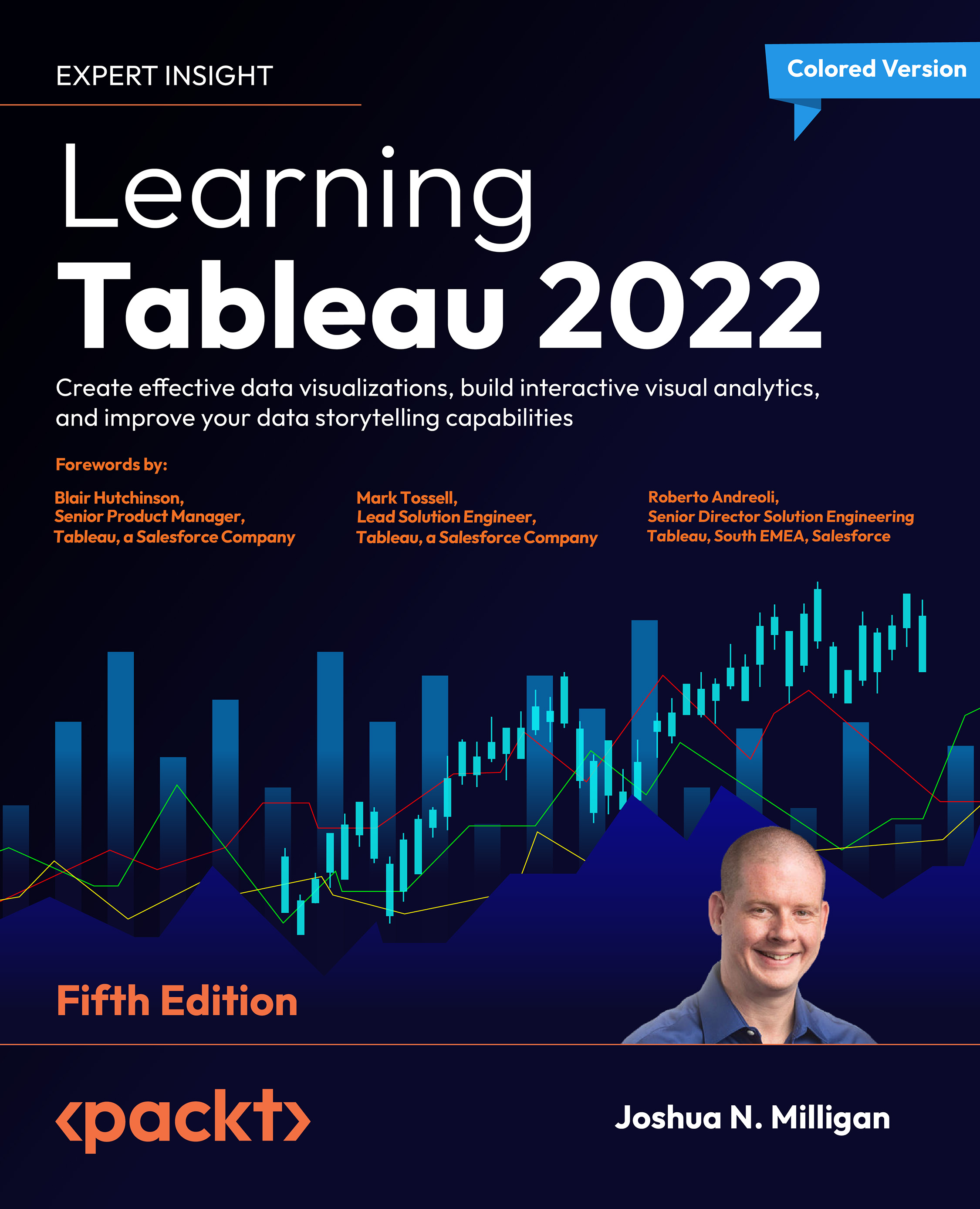In this chapter, we’ll gain a deeper understanding of how to model and structure data with Tableau. We’ve seen the Data Source screen in previous chapters and briefly explored how to drag and drop tables to form relationships. Now, we’ll explore some of Tableau’s more complex features to gain a good understanding of how Tableau allows you to relate multiple tables together, either logically or physically.
We’ll start with a broad overview of Tableau’s new data model and then examine some details of different types of joins and blends. The data model and blending apply primarily to Tableau Desktop (and Server), but pay special attention to the discussion of joins, as a good understanding of join types will aid you greatly when we discuss Tableau preparation in Chapter 16, Taming Data with Tableau Prep.
The data model was introduced in Tableau 2020.2. If you are using an...



 Free Chapter
Free Chapter
